About types of pick axe. The pickaxe is one of the tools that evolved from having a stone head in medieval times to a metallic one.
Nonetheless, its applications in gardening have remained the same- digging rocky grounds, tilling the land with roots, etc.
It helps to know the different types of pick axe as there’s more than one kind in the market.
Hence, this guide assists you in identifying pick axe types and understanding the respective function of each.
Parts Of A Pickaxe
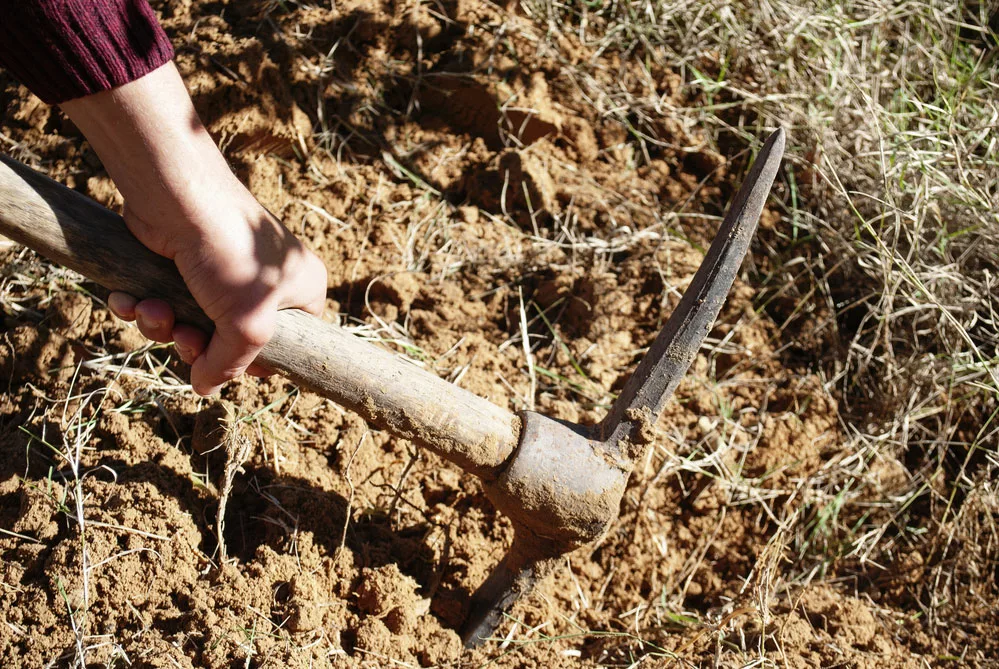
Digging with a pickaxe.
Fundamentally, the pick axe is a type of axe; hence it comprises two main parts, the head and the handle.
Pick Axe Head
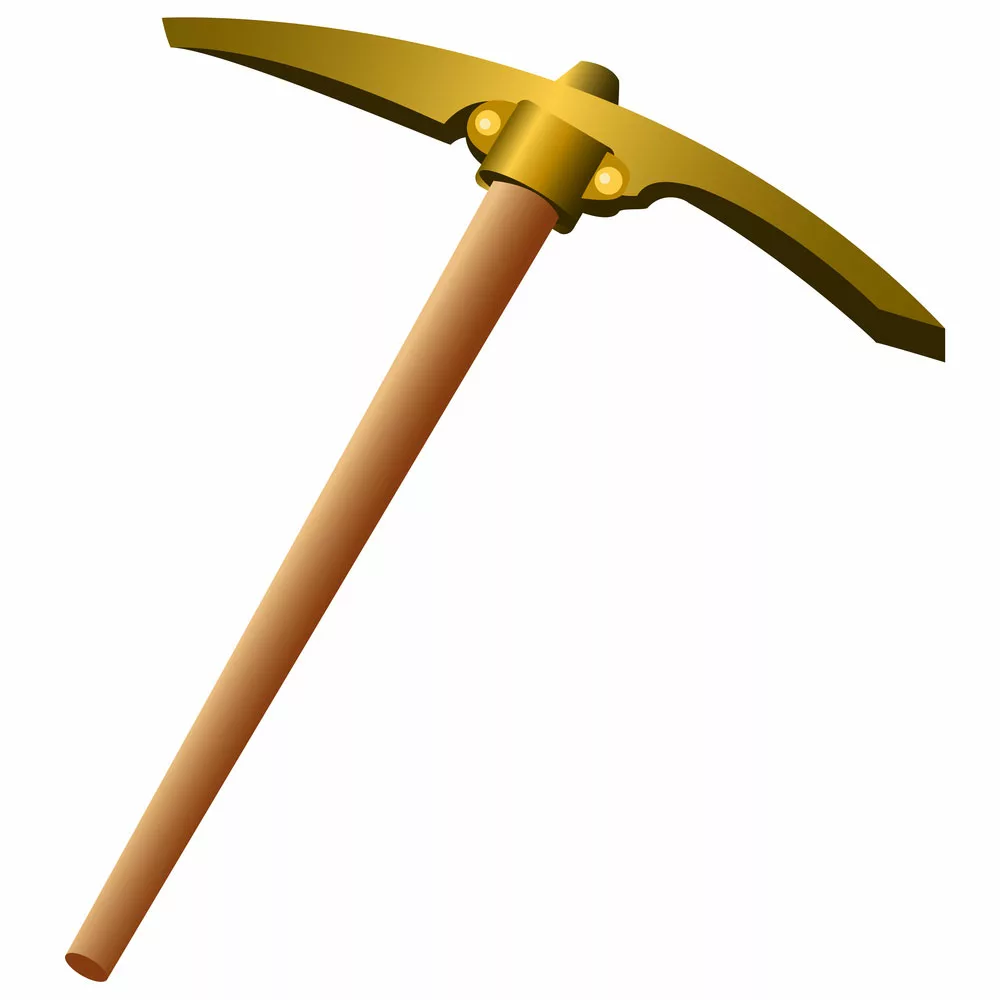
A pick axe.
One end of a pick axe is a typical point end, while there are variations to the other, such as a chisel, adze, or even a hammer. The axe-like point is essential for breaking hard surfaces such as rocks, primarily when tilling.
On the other hand, the following are the applications of the opposite end, depending on its kind.
| Pick Axe Head Type | Application |
|---|---|
| Chisel | It is essential in chiseling rocky grounds and digging drenches. |
| Hammer | A hammerhead is useful in driving nails in during woodworking or posts in the ground. |
| Adze | It is vital for precise woodworking applications such as carving wood. |
For the pointed end of the pickaxe, the four main variations are as follows:
| Pointed Head Type | Specific Use |
| Round pointed end | It’s the most versatile pick axe point hand, although its round points render it highly likely to slip off the materials you’re working on. |
| Diamond-pointed end | This is the ideal head if you seek a pick axe with immense penetrating power. Another upside is that, like the round pointed head, this barely slips off surfaces thanks to its shape. Therefore, it is the best end if you’re working in tight spaces. |
| Chisel pointed end | If the surface you intend to split looks quite complex, this is the ideal tool. It also doesn’t easily slip off, although it is prone to breaking when you use it on thick surfaces. |
| Square pointed end | It’s the best head for masonry work primarily because it has minimal damage to the area surrounding where you’re working. It’s also highly durable and less prone to slipping, hence ideal for working in tight spaces. |
Pick Axe Handle
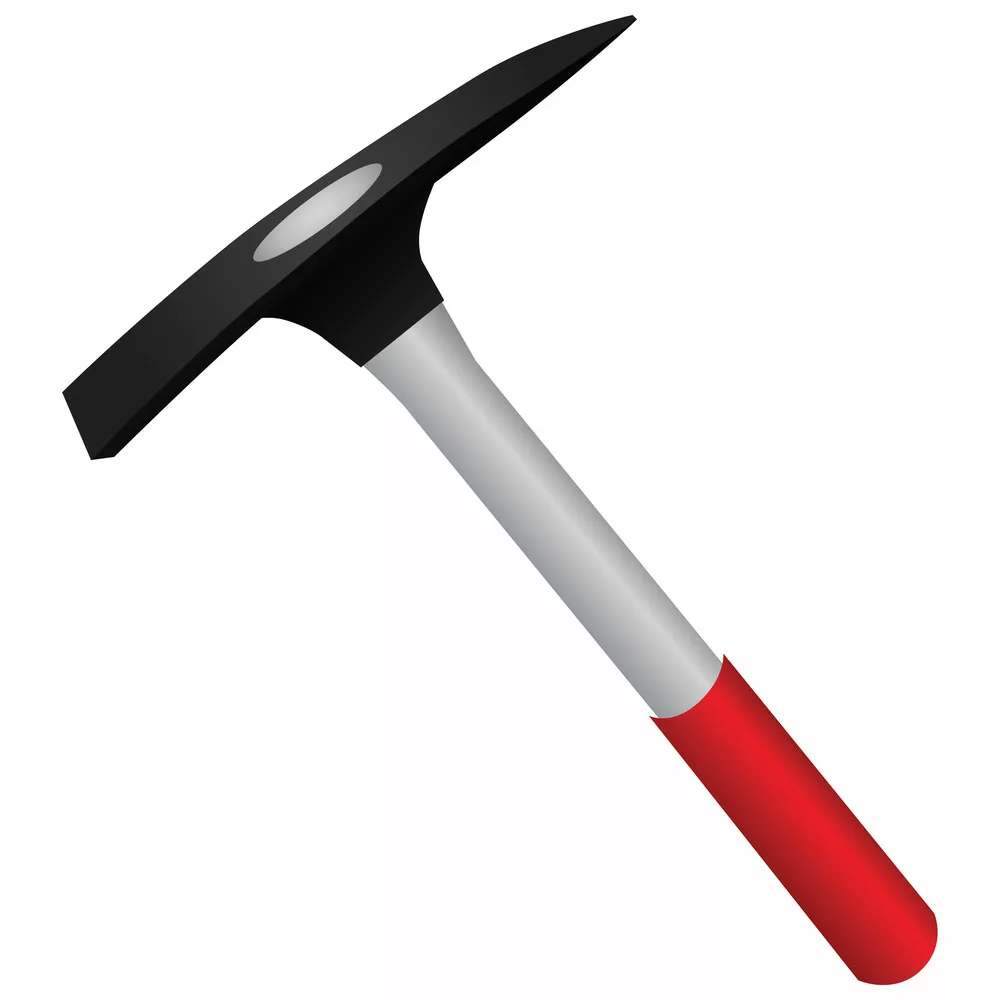
A composite handle pickaxe.
Like any other axe handle, there are different variations of the pick axe handle. They include the conventional wooden types to the latest ones, such as fiberglass and composite. Let us explore each of them at length.
- Wooden Axe Handle
It’s the commonest handle for any axe type primarily because it is cheap to install and is also widely available. Further, the wooden handle effectively absorbs shock during use. Nonetheless, it is highly likely to break, and thus you must use it properly. Also, it would be best if you didn’t leave a pick axe with a wooden handle outside, as it will reduce lifespan.
- Composite Handle
It comprises a mixup of materials that deliver the ideal conditions for working the pick axe. Primarily, it has a fiberglass part (an effective shock absorber) and steel (which provides a perfect grip). Moreover, like a wooden handle, it is easy to find and fix a composite if it’s broken.
- Fiberglass Handle
The material is the ideal alternative to metallic handles primarily because it is not an electrical conductor. Thus, you can use it on electrical lines without running the risk of getting electrocuted. Compared to wooden handles, fiberglass is more lightweight and barely splinters. Nonetheless, it doesn’t beat a metallic handle regarding durability.
- Metallic Handle
Most metal handles are steel-made, and the most durable pick axe handles.
They are also relatively weighty compared to the other axe handles; hence ideal if you prefer some weight on your pick axe. However, such handles are prone to rust, so you must never expose the tool to moisture.
They are also quite pricey to buy and fix than the other types we’ve covered.
3 Main Types Of Pickaxes
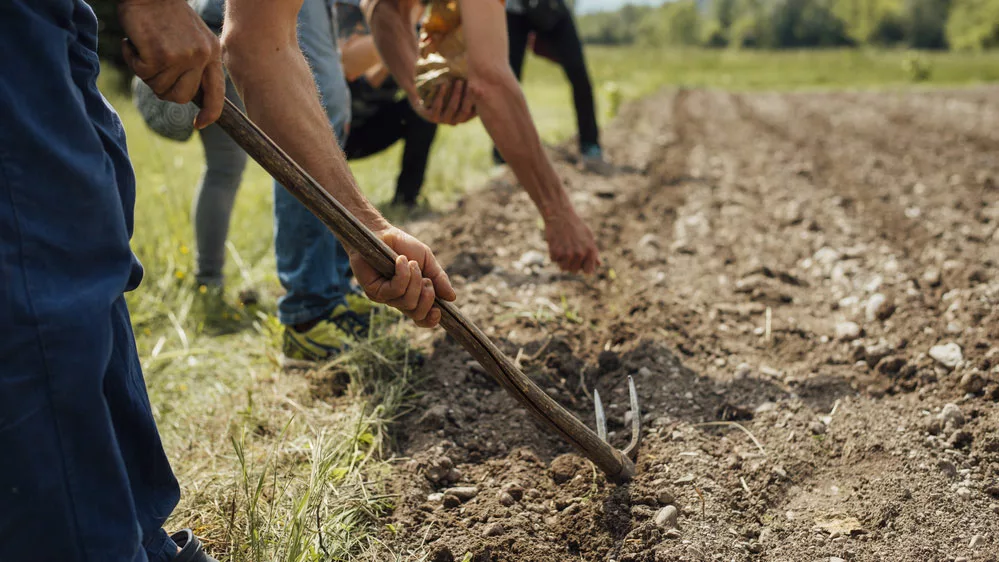
Working with a gardening hoe.
Below are the three main pick axe variations and their respective uses.
- Sapper
A sapper is essential in the construction industry; it features a long pointed head on one end while the other is broad. The wide end is imperative in cracking rocks.
- Hoe
The hoe or shovel is the best pick axe for removing snow cover from a surface.
- Rammer
As its name suggests, the pick axe is useful in destructive applications such as bringing down a brick-walled structure.
Is there a difference between a Pick Axe and A Mattock?
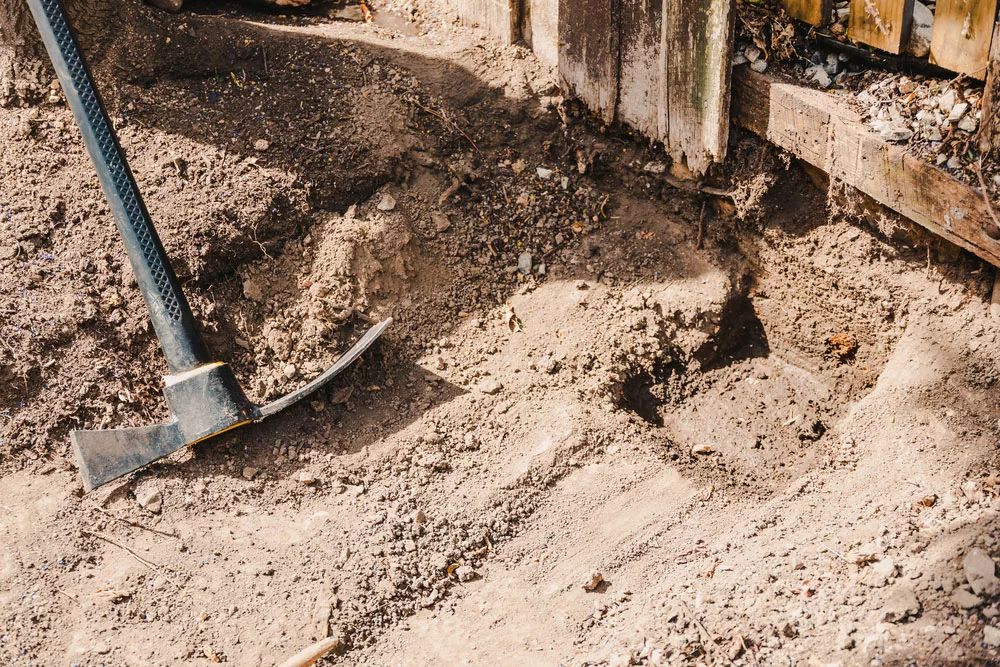
A mattock.
- The primary difference is that the ax’s traverse head is broader than the pick axe. Hence, it’s best suited to digging and prying. Conversely, the pick axe’s traverse end is not as widely pronounced as a mattock’s (it’s more chisel-like).
- Secondly, a pick axe is more versatile than a mattock. Primarily, we use a mattock to till and cut roots, while there are more uses for a pick axe.
2 Best Practices when using a pick axe
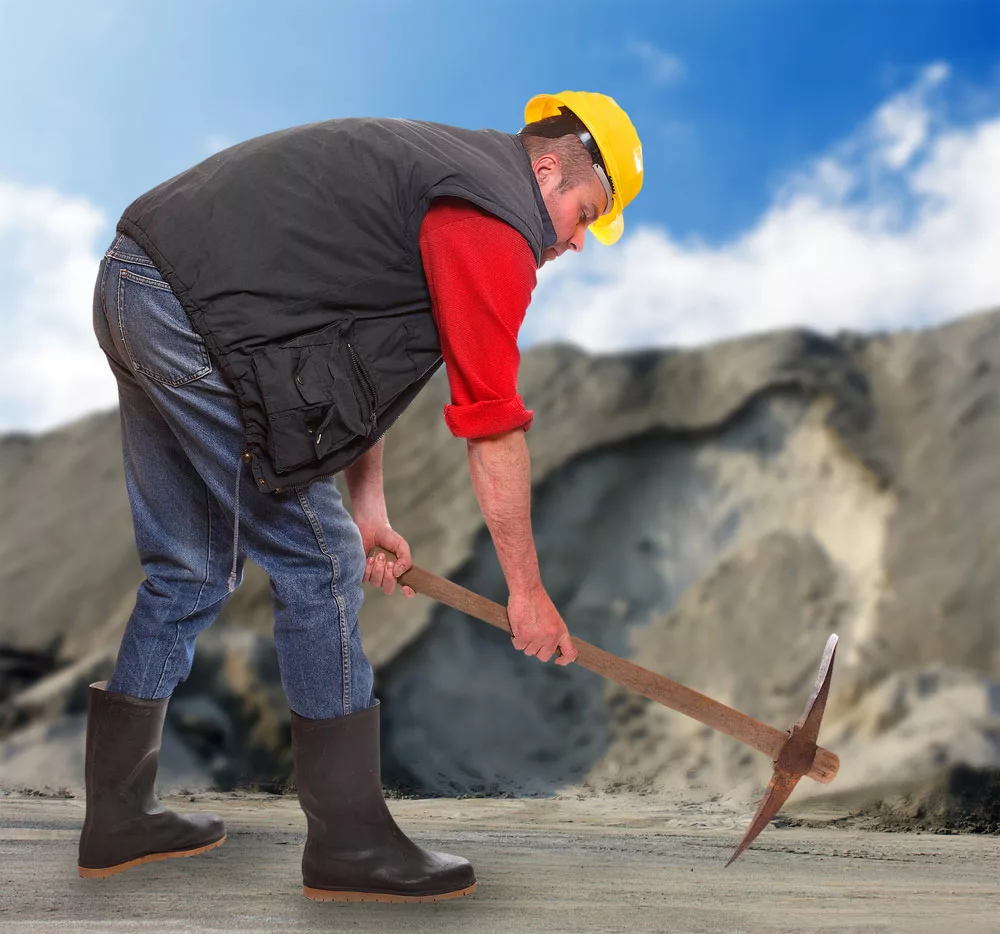
Always wear headgear when working with a pickaxe.
- You must be vigilant of your surroundings when using a pick axe to avoid prevalent accidents with the tool.
- Also, always wear protective headgear (preferably a helmet when working with the tool).
Conclusion
When selecting the right pick axe for the task, you must consider its key features as there are different tool variations. Also, settle for the handle type that is best to work with for you. For more, reach out to us at any time.
